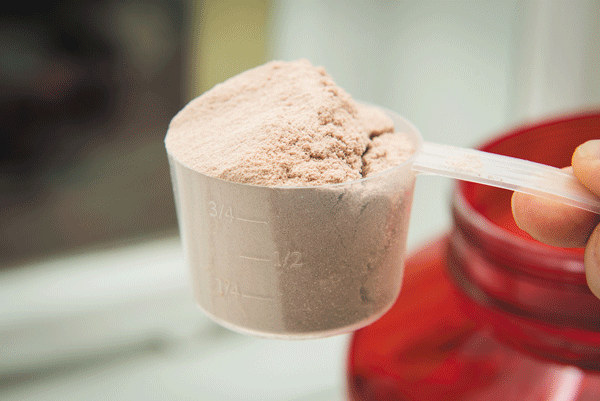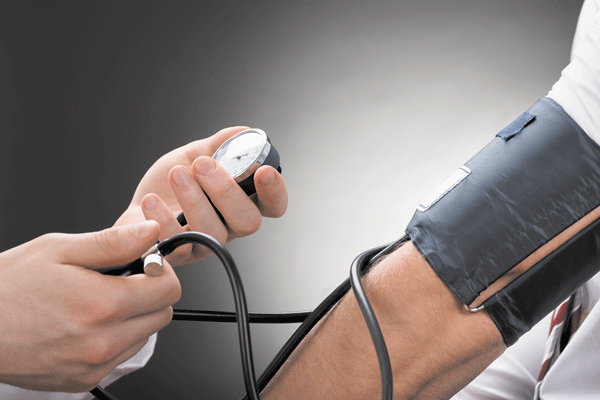
Tips to leverage neuroplasticity to maintain cognitive fitness as you age

Can white noise really help you sleep better?

Celiac disease: Exploring four myths

What is prostatitis and how is it treated?

What is Cushing syndrome?

Exercises to relieve joint pain

Think your child has ADHD? What your pediatrician can do

Foam roller: Could you benefit from this massage tool?

Stepping up activity if winter slowed you down

Common causes of cloudy urine
Controlling Your Blood Pressure Archive
Articles
Blood pressure targets changing?
News briefs
New guidelines ease up on the target number to treat high blood pressure in otherwise-healthy older adults. The guidelines from the American College of Physicians and the American Academy of Family Physicians were published Jan. 17, 2017, in Annals of Internal Medicine. Instead of recommending treatment for people ages 60 or older when the systolic measurement (the top number) is at or above 140 millimeters of mercury (mm Hg), the new target is now 150 mm Hg or higher. The physician groups point to evidence suggesting that the higher number is enough to reduce the risk of death, stroke, or heart attack in otherwise-healthy older adults. They say lower (more aggressive) targets provide little benefit unless a person has a history of stroke or a high risk of heart problems (from risk factors such as high cholesterol, obesity, and diabetes). In that case, the guidelines recommend treatment at or above 140 mm Hg. These new numbers are considered controversial; the American Heart Association still recommends aiming for a blood pressure reading of less than 140/80 mm Hg. Bottom line: Optimal blood pressure targets must be tailored to your individual needs. Ask your doctor what's right for you.
Your blood pressure goal: A personalized balancing act
Experts are divided on optimal blood pressure targets but agree that an individual approach is the best strategy.
There's no debate about the dangers of high blood pressure. Dubbed the "silent killer," high blood pressure usually has no symptoms. Yet this common condition damages blood vessels throughout the body, raising the risk of heart attack, stroke, kidney disease, and other problems.
But exactly when to start drug therapy for high blood pressure and how aggressive that treatment should be — especially in older people — has been a matter of some dispute in recent years. Some studies suggest that aiming for a stricter (that is, lower) blood pressure target than the current guidelines recommend can substantially reduce a person's risk of cardiovascular complications (see: "Blood pressure research and guidelines: A moving target?"). Other studies offer evidence that a more relaxed (that is, higher) target makes more sense for most people, given the potential harms of drug side effects such as fatigue and coughing, as well as low blood pressure, which can cause lightheadedness and fainting.
Nordic diet linked to lower stroke risk
Research we're watching
Following a Nordic diet — which features fish, whole grains, plus fruits and vegetables popular in Scandinavian countries — may help lower the risk of stroke, a new study suggests.
The study, published in the February 2017 issue of Stroke, included more than 55,000 Danish people from a national health registry, all of whom filled out questionnaires about their diets and other lifestyle habits. Researchers looked at how closely the participants followed the Healthy Nordic Food Index, which includes six food categories: fish, apples and pears, root vegetables (such as carrots and celery root), cabbages (which also include broccoli, cauliflower, kale, and Brussels sprouts), rye bread, and oatmeal.
Blood pressure creeping up? How to bring it down without drugs
Lifestyle changes may reduce your need for pills.
For most of us, as the years increase, so does our blood pressure. By age 60, almost 65% of Americans will have high blood pressure. Although men are more likely to develop high blood pressure between ages 45 and 55, women are at greater risk after 65. Yet high blood pressure isn't an inevitable fact of later life. It's possible to slow the processes that drive blood pressure up. By doing so, you'll also reduce your risk of heart attack, stroke, and dementia.
Blood pressure reflects the amount of blood flowing through the vessels and the pressure exerted by the vessel walls against the blood. In a blood pressure reading, the top number represents the systolic pressure, recorded when the vessel contracts to push blood through. The bottom number represents the diastolic pressure, recorded when the vessels are relaxed. Over time, our blood vessels lose elasticity, and atherosclerotic plaque may build up in artery walls. Both of these trends make vessels stiffer. As vessels become less flexible, blood pressure is higher at any level of blood flow.
Milk protein may lower blood pressure
A powdered form of whey protein from milk may modestly lower blood pressure.
Potassium lowers blood pressure
When it comes to fighting high blood pressure, the average American diet delivers too much sodium and too little potassium. Eating to reverse this imbalance could prevent or control high blood pressure and translate into fewer heart attacks, strokes, and deaths from heart disease.
Normal body levels of potassium are important for muscle function. Potassium relaxes the walls of the blood vessels, lowering blood pressure and protecting against muscle cramping. A number of studies have shown an association between low potassium intake and increased blood pressure and higher risk of stroke. On the flip side, people who already have high blood pressure can significantly lower their systolic (top number) blood pressure by increasing their potassium intake when they choose to eat healthy foods.
Low potassium levels from diuretics
Thiazide diuretics like hydrochlorothiazide (Esidrix, HydroDIURIL, other brands) continue to be a very effective way to lower blood pressure for people with hypertension. They're inexpensive, and results from large studies have shown them to be at least as effective as other types of blood pressure drugs for most patients.
But if you're taking a diuretic, your potassium levels need to be watched. These drugs direct the kidneys to pump water and sodium into the urine. Unfortunately, potassium also slips through the open floodgates. A low potassium level can cause muscle weakness, cramping, or an abnormal heartbeat, which is especially dangerous for people with heart problems.
Pill-free ways to lower high blood pressure
Reduce your dependence on medications with these strategies.
More than a third of all adults in the United States have high blood pressure—a systolic pressure (the top number in a reading) of at least 140 millimeters of mercury (mm Hg), or a diastolic pressure (the bottom number) of at least 90 mm Hg, or both. The condition injures blood vessel walls and forces the heart to work harder, increasing the risk for heart disease and stroke.
Taking medication to treat high blood pressure is just part of the solution.
Beware of low diastolic readings when treated for high blood pressure
New research has linked heart tissue damage to blood pressure treatments that drive diastolic pressure (the bottom number in a reading) too low.
Reminder: Don't skip blood pressure medication
Millions of older adults aren’t taking their blood pressure drugs as directed. Ways to combat adherence problems include asking a doctor for less expensive drugs, understanding what a medication is for, and reporting side effects.

Tips to leverage neuroplasticity to maintain cognitive fitness as you age

Can white noise really help you sleep better?

Celiac disease: Exploring four myths

What is prostatitis and how is it treated?

What is Cushing syndrome?

Exercises to relieve joint pain

Think your child has ADHD? What your pediatrician can do

Foam roller: Could you benefit from this massage tool?

Stepping up activity if winter slowed you down

Common causes of cloudy urine
Free Healthbeat Signup
Get the latest in health news delivered to your inbox!
Sign Up








